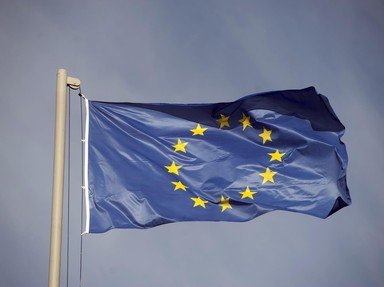Quiz Answer Key and Fun Facts
1. The Treaty of Nice was agreed on in December 2000 in Nice. Which country was holding the rotating presidency of the European Union at that time?
2. After being agreed on, each new Treaty has to go through a long and complicated procedure of ratification. In some EU Member States, before it can be ratified by their respective national parliaments, it must be approved by the citizens in referendum. The people of which country initially rejected the Treaty of Nice?
3. The Treaty of Nice was agreed on in December 2000, signed in February 2001, and came into force in 2003. However, the most important changes introduced by this Treaty didn't apply immediately, but only as from what year?
4. The Treaty of Nice defines the number of seats in the European Parliament for the new Member States, the number of votes allocated to them within the Council, etc.
5. Pursuant to the Treaty of Nice, the composition of the European Commission is as follows:
6. One of the most important changes brought by the Treaty of Nice is the provision for the appointment of members of some European Union institutions or bodies, who so far were nominated by the European Council, by qualified majority. This provision relates to the nomination of members of at least three of the following EU institutions:
7. The Treaty of Nice increases the powers of the European Commission president.
8. What is the maximum number of the Members of the European Parliament, set by the Treaty of Nice?
9. The Treaty of Nice stipulates that the number of members of the Committee of the Regions and the European Economic and Social Committee cannot exceed which of the following limits?
10. Following the Treaty of Nice, at least one formal meeting ('summit') of the European Council during each rotating presidency has to be held in one of the following cities:
Source: Author
beatka
This quiz was reviewed by FunTrivia editor
bloomsby before going online.
Any errors found in FunTrivia content are routinely corrected through our feedback system.
